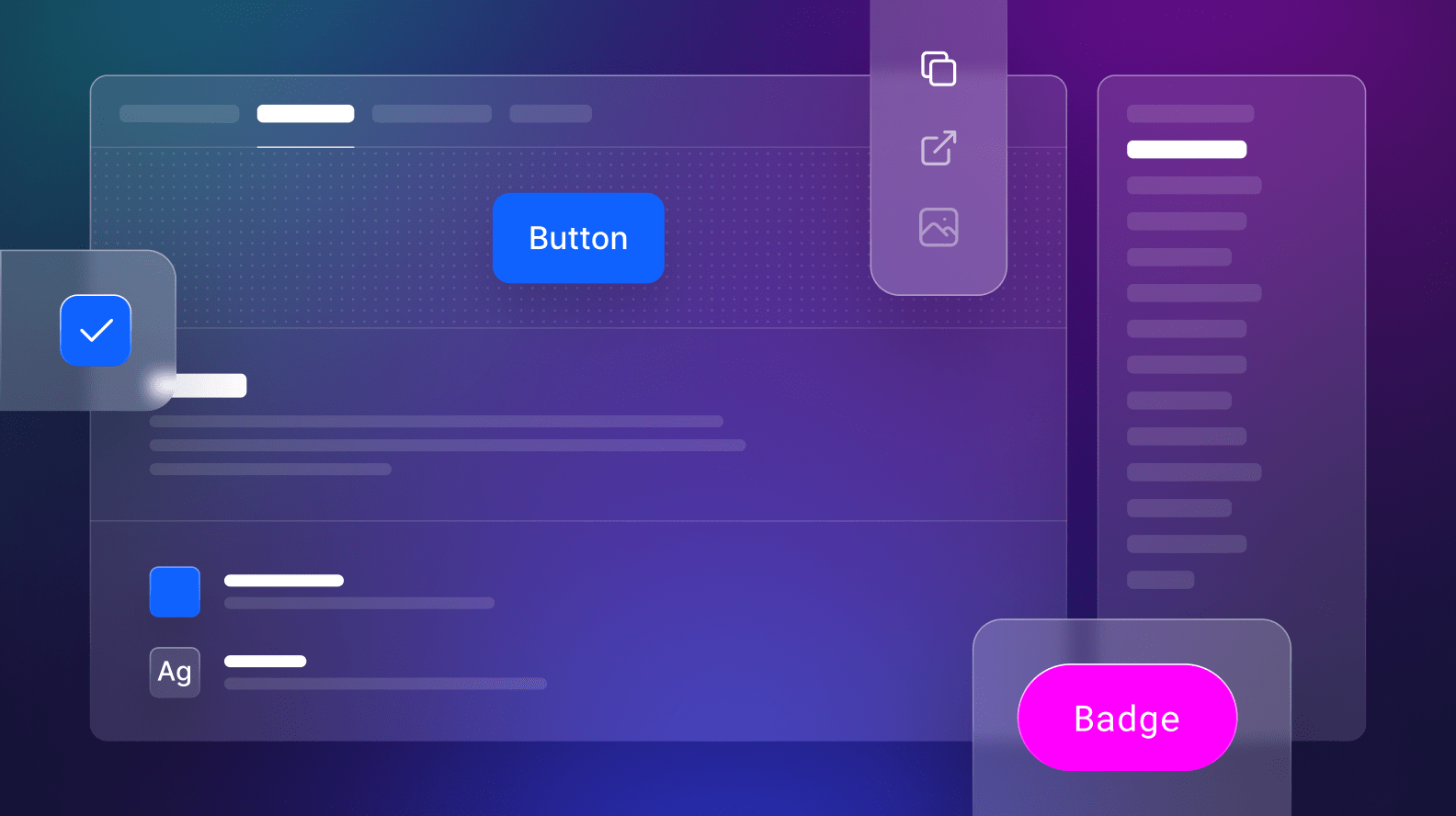In the ever-evolving landscape of digital product development, the term "design system" has become increasingly prevalent. But what is a design system, and why is it essential for modern design and development teams? This article explores the core elements of design systems and their significance in creating cohesive and efficient design workflows.
Definition: What is a design system?
A design system is a comprehensive framework that includes a set of standards, guidelines, and reusable components used to manage design at scale. It serves as a single source of truth for teams, ensuring consistency across various products and platforms. Design systems encompass everything from UI components and patterns to brand guidelines and documentation.
Components of a design system
A robust design system comprises several key components:
- UI Components and Patterns
- These are the building blocks of a design system. They include buttons, forms, modals, and other UI elements that are used repeatedly across different applications. For more on component management, read our article on fundamentals of design system components.
- Design Tokens
- Design tokens are the variables that store design-related information such as colors, typography, and spacing. They play a crucial role in maintaining consistency and scalability. Learn how to manage your design tokens in our guide on design token management.
- Brand Guidelines
- These guidelines ensure that the brand's visual and voice identity is consistently applied across all touchpoints. They cover aspects such as logos, color palettes, typography, and tone of voice.
- Documentation
- Comprehensive documentation is vital for the effective use of a design system. It provides detailed instructions on how to implement and maintain the system, facilitating easier onboarding and training. Explore our in-depth guide on design system documentation.
Understanding what a design system is also involves recognizing the numerous benefits it offers:
- Consistency: A design system ensures that all products adhere to the same visual and functional standards, creating a unified user experience. According to Smashing Magazine, consistency is crucial for maintaining a cohesive brand identity.
- Efficiency: By reusing components and patterns, teams can significantly reduce design and development time, accelerating the product development cycle.
- Scalability: Design systems provide a scalable framework that can adapt to new requirements and technologies, making it easier to manage large-scale projects.
- Collaboration: With a single source of truth, cross-functional teams can collaborate more effectively, reducing misunderstandings and improving workflow efficiency. See how Mews scaled their design system to enhance collaboration.
Implementing a design system
Implementing a design system involves several steps:
- Audit Existing Design Assets
- Begin by auditing your current design assets to identify inconsistencies and areas for improvement. This will provide a clear understanding of what needs to be included in the design system.
- Define Standards and Guidelines
- Establish clear standards and guidelines that will form the foundation of your design system. This includes defining UI components, design tokens, and brand guidelines.
- Develop a Component Library
- Create a library of reusable components that adhere to the defined standards. This library should be easily accessible to all team members.
- Document Everything
- Comprehensive documentation is crucial for the successful implementation and maintenance of a design system. Ensure that all aspects of the system are well-documented and easily accessible. For best practices, check out our article on documenting design system components.
- Train Your Team
- Conduct training sessions to familiarize your team with the design system. This will ensure that everyone understands how to use the system effectively.
Challenges and solutions
While the benefits are clear, implementing a design system can present several challenges:
- Resistance to Change: Teams may resist adopting a new system. Address this by clearly communicating the benefits and providing adequate training.
- Maintenance: Keeping the design system up-to-date can be challenging. Assign dedicated resources to manage and update the system regularly.
- Scalability: As your product evolves, your design system must adapt. Ensure your system is flexible and scalable to accommodate future needs. Learn about future-proofing your design system for long-term success.
Conclusion
So, what is a design system? It is a powerful tool that brings consistency, efficiency, and scalability to your design and development processes. By implementing a robust design system, organizations can create cohesive user experiences, streamline collaboration, and accelerate product development. To dive deeper into the intricacies of design systems, explore our comprehensive resources on design system documentation.
FAQs
What is a design system?
A design system is a comprehensive framework that includes standards, guidelines, and reusable components to manage design at scale, ensuring consistency across products and platforms.
Why are design systems important?
Design systems ensure consistency, improve efficiency, support scalability, and enhance collaboration among teams.
What are the key components of a design system?
Key components include UI components and patterns, design tokens, brand guidelines, and comprehensive documentation.
How do design systems improve collaboration?
They provide a single source of truth, reducing misunderstandings and improving workflow efficiency among cross-functional teams.
What challenges might arise when implementing a design system?
Challenges include resistance to change, maintaining the system, and ensuring scalability to accommodate future needs.
How can organizations overcome resistance to adopting a design system?
Organizations can overcome resistance by clearly communicating the benefits and providing adequate training to team members.



.png)
